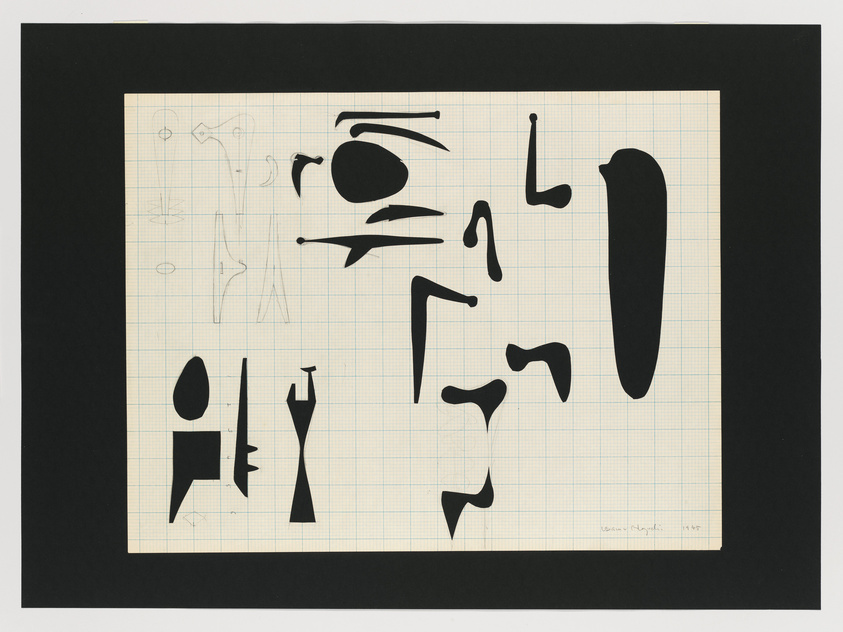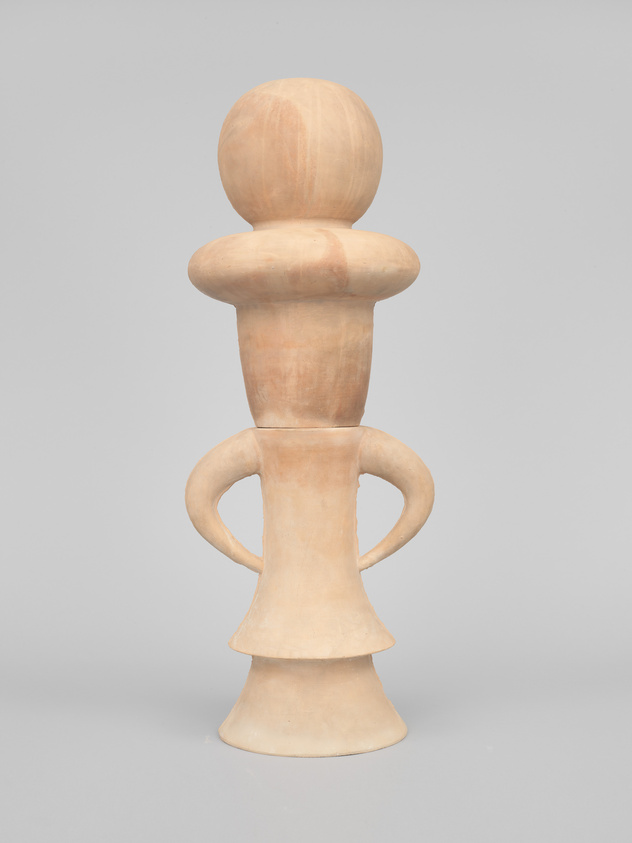Isamu Noguchi used drawings, models, and collages to develop the biomorphic shapes for his interlocking sculptures of the mid- to late-1940s. First, he drew the individual pieces and cut them out of black craft paper. He then assembled the pieces into small freestanding maquettes. This allowed him to see the composition from all angles, to change the models’ shapes easily with scissors, and to determine their physical stability. Next, Noguchi disassembled his maquettes and mounted the paper forms on graph paper so that he could calculate the precise measurements for their enlargement into sculpture. Few of these graph paper worksheets were saved; Worksheets for Sculpture, which survives because most of its cut-out paper forms were not developed into sculptures, thus offers a rare glimpse into the artist’s working process. Following his graph paper studies, Noguchi made enlarged versions of his paper cut-outs and translated them into thin, flat pieces of slate or marble. After tracing the contours of the enlarged shapes onto the stone surface, he used a circular saw to cut out the forms along the penciled lines and beveled the edges. The pieces of his interlocking sculptures were notched so that they could be assembled without screws or other supports.
Not on view
Date
1945
Classification
Drawings
Medium
Graphite pencil on cut graph paper mounted on paper
Dimensions
Sheet: 17 × 21 15/16in. (43.2 × 55.7 cm)
Accession number
74.46
Credit line
Whitney Museum of American Art, New York; purchase, with funds from the Howard and Jean Lipman Foundation, Inc.
Rights and reproductions
© The Isamu Noguchi Foundation and Garden Museum / Artists Rights Society (ARS), New York


